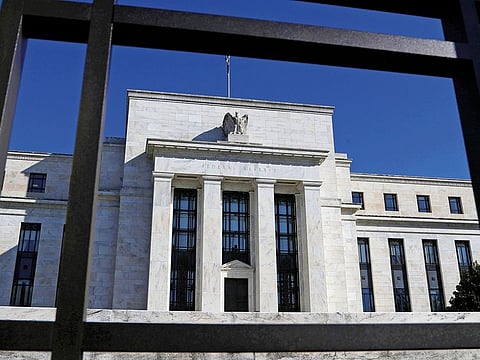Central bankers face balancing act amid rising inflation, war and slower growth
Countries face a challenge in replacing supply of commodities from Russia and Ukraine

New York/London: Central bankers around the world are facing a double whammy of faster inflation and the prospects of slower growth, only made worse by Russia’s invasion of Ukraine.
The biggest annual surge in US consumer prices since 1982 illustrates an environment of persistent inflation that will encourage Federal Reserve policy makers to begin raising interest rates. At the same time, the oil shock will engender even more inflation, helping explain why Goldman Sachs Group Inc. economists cut their US growth forecasts.
This coming week’s rate decision by the Fed will follow the European Central Bank’s announcement to accelerate an exit from monetary stimulus despite weaker economic activity. In Asia, economies with higher oil-import bills are especially vulnerable.
Supply subsitution
Countries around the globe face a challenge in replacing supply of commodities from Russia and Ukraine that has been cut off by the war and should remove restraints to production, according to the World Bank chief.
At least four central banks raised interest rates this week, with Poland, Hungary and Peru all continuing their hiking cycles. Meanwhile, Mauritius increased borrowing costs for the first time in more than a decade.
US inflation
Consumer price gains accelerated in February to a fresh 40-year high on rising gasoline, food and housing costs, with inflation poised to rise even further following Russia’s invasion of Ukraine.
Sentiment tumbled in early March to the lowest since 2011 and year-ahead inflation expectations rose to a four-decade high. Consumers expect prices to rise 5.4% over the next year, the highest reading since 1981, according to University of Michigan data.
Europe’s hard choices
The European Central Bank unexpectedly accelerated its wind-down of monetary stimulus, signaling it’s more concerned about record inflation than weaker economic growth as Russia’s invasion of Ukraine threatens to propel prices even higher.
A historic surge in commodity prices after Russia’s invasion, coming on top of already-high pandemic inflation, has investors and economists searching for parallels with the energy shocks of four decades ago and the prolonged slowdowns that followed. Among developed economies, the risk is perhaps greatest in Europe.
Asia’s oil dependence
As a net importer of energy, Asia is vulnerable to the oil price spike triggered by Russia’s war. With more than 40 per cent of global exports stemming from the region, any sustained price increases will ripple throughout the world.
China’s ability to meet its ambitious economic growth target for the year is being questioned by economists just days after it was announced, as the country faces a spike in oil prices, the highest coronavirus spread in years and continuing financial woes for property developers.
Russia is headed for one of its biggest inflation spikes this century after waves of sanctions over the invasion of Ukraine touched off the collapse of the ruble and disrupted trade. In the first full week since the military offensive began late in February, prices for new domestic cars soared over 17 per cent and the cost of television sets jumped 15 per cent.
The war in Ukraine means the food inflation that’s been plaguing global consumers is now tipping into a full-blown crisis, potentially outstripping even the pandemic’s blow and pushing millions more into hunger.
Sign up for the Daily Briefing
Get the latest news and updates straight to your inbox



